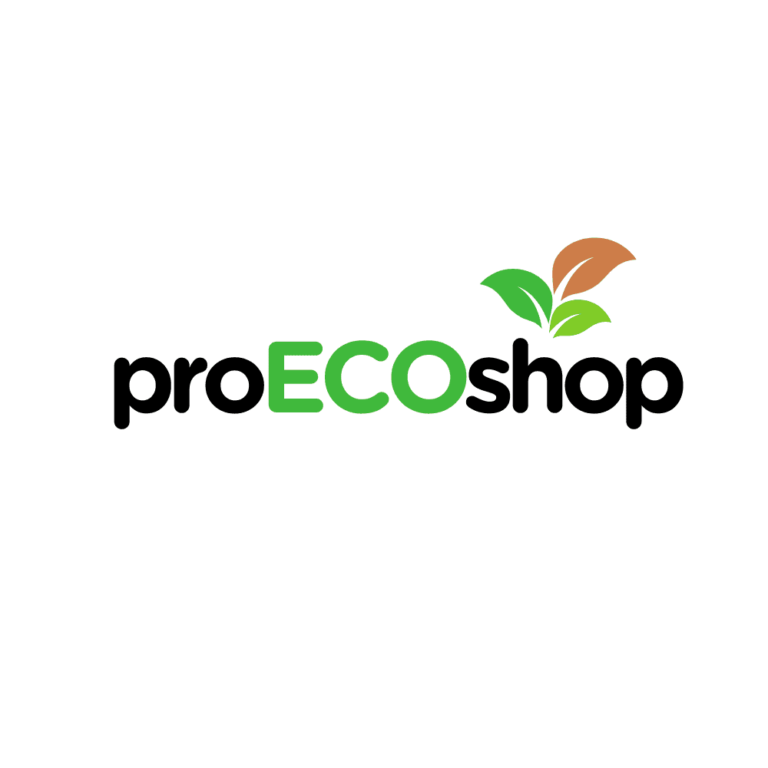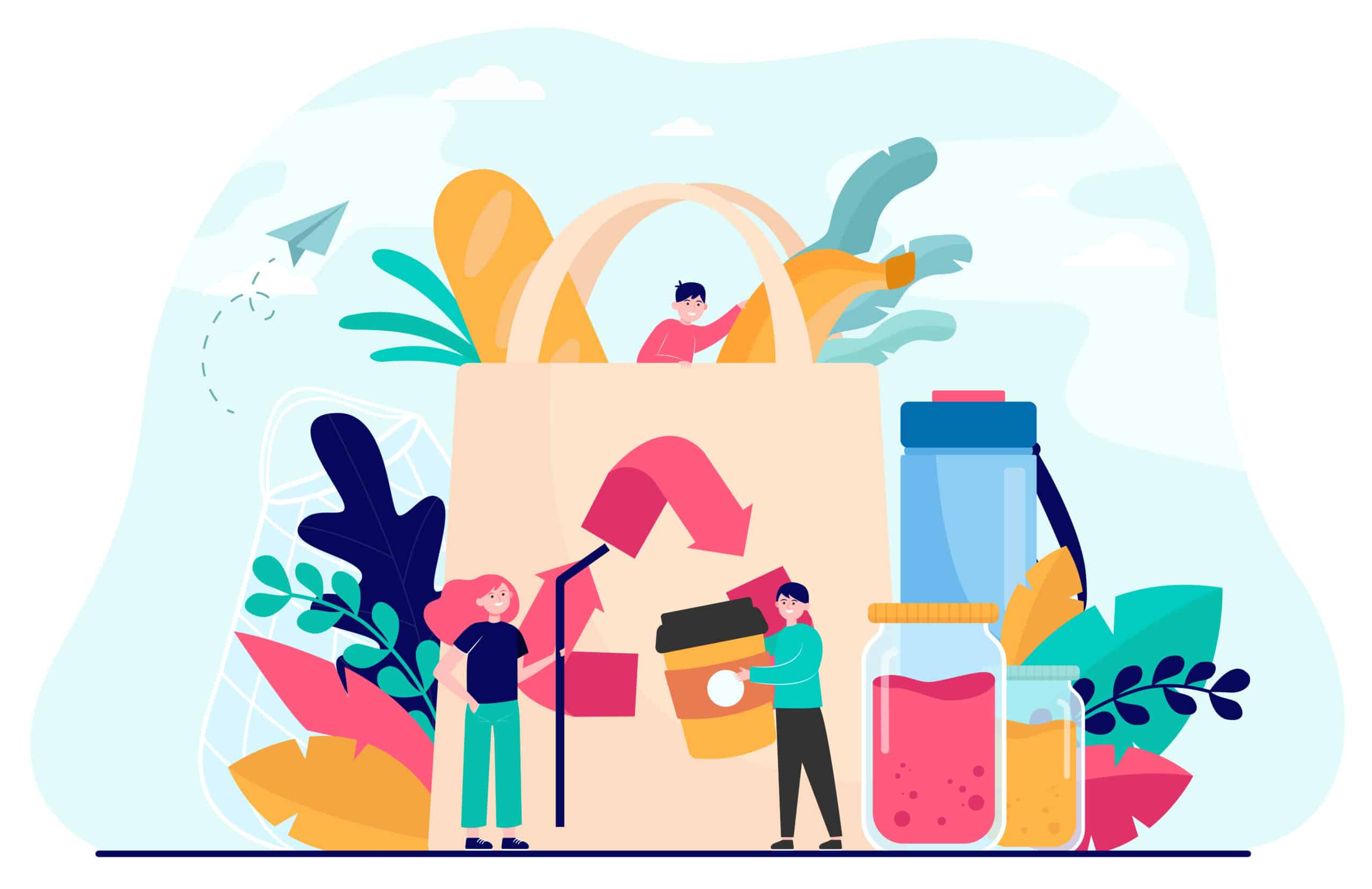Eco-Friendly shopping is a moral imperative in the current world. As humans, we have basic needs and must buy things, but it’s not always easy to know which products and companies we can trust. Here are our Eco-friendly tips and tricks, a 7 step guide to ensure that you’re doing your part to shop responsibly.
1. Learn The Story
2. Buy Local Products
3. Food Preparation, Labeling and Packaging
4. Avoid Fast Fashion – Reuse and Recycle
5. Identify and Avoid Greenwashing
6. Concentrated Cleaning Products
7. Certifications You Can Trust
Learn The Story
If you’re trying to shop in an eco-friendlier way, knowing a product or company’s story is a good place to start. This principle applies to anything you might buy, ranging from food to clothes.
A business that shares its story, is proud of its practices. Companies like Sabah feature photos on the company website of the Turkish workers who make their shoes. Sabah is proud of its practices and wants its customers to see how they make their shoes.
This is just one example. As a general rule, a company that is transparent about its business practices is a good place to begin.
Buy Local Products
Buying products that are grown or made close to your home is one of the easiest ways to shop in a more eco-friendly way. Following this general guideline will always serve you well, no matter what you’re purchasing. When you buy local products you:
- Give yourself access to the product’s story.
- Reduce the distance that products travel.
- Contribute to your local economy.
Reducing The Distance Your Products Travel
When you buy from a local artisan, you ensure that whatever it is you need, didn’t travel from across the world. IKEA is yet another example of a company that has its products made in countries like Malaysia, Vietnam and China. This means fuel is burned by land and sea to bring goods to the closest IKEA location.
A quick google search can yield local artisans who make things of all kinds! Handmade clothes, jewelry, furniture, and even cleaning products are becoming more accessible. Artisanship is becoming a powerful part of our new economy, which means you don’t have to buy your furniture from IKEA.
The same principle applies to food. On average, food in the U.S. travels 1,500 miles before it reaches your plate. That figure applies to things purchased in traditional grocery stores. Food from a Farmers’ Market only travels an average of only 60 miles before you buy it.
Farmers’ Markets
Farmers’ Markets eliminate any question about the integrity of a product because you’re guaranteed to be buying locally. Farmers are bringing the food they’ve produced, directly to the consumer. Farmers’ markets reduce the amount of packaging waste used to wrap food because it doesn’t need to travel as far to reach the consumer. If you’ve ever been to a Farmers’ Market, you can imagine organic fruits and vegetables stacked on wooden tables. An added bonus is the flavor and health benefits! The organic growing practices of local farmers means their produce retains more nutrients and natural flavor.
This website can help you find a Farmer’s Market near you.
When Shopping Online
Online shopping has been a saving grace for people during the COVID 19 pandemic for good reason. Amazon’s 2020 sustainability report reflects this reality however, showing they emitted 60.64 million metric tons of carbon dioxide. While Amazon plans to use 100,000 electric delivery vehicles by 2030, online shopping is still harmful to the environment for now.
Have Multiple Items Shipped at Once
Let’s be honest, you can’t always buy everything you need next door. We live in a world dependent on cell phones, laptops and other electronics that many people purchase online.
One of the best ways to reduce the number of trips for your purchases, is to buy as many things as possible, at the same time. This way, the delivery truck coming to your house can bring more items to you at once, meaning it makes fewer trips!
Food Preparation, Labeling and Packaging
When it comes to food, you can’t buy everything you need from a Farmers’ market. In this case, you can do your best to buy food that is being sourced in eco-friendly ways.
For example, buying produce that’s in season, helps to avoid fruit and vegetables that have been flown to your location on an airplane. Fragile fruits and vegetables like berries, papaya, and green beans are often transported by plane to avoid spoiling. You’re not thinking of airplanes when rummaging through papayas at the supermarket, but you could be contributing to greenhouse gas emissions by purchasing your favorite exotic fruit.
Another important thing to do is avoid pre-cut, pre-packed fruits and vegetables. This might be pineapple or cucumber slices in a plastic container. These fruits and vegetables require human labor for preparation which you could do yourself. These vegetables and fruits also require unnecessary plastic packaging.
When it comes to buying other foods, it may not always be easy to tell which companies you can trust. Luckily, there are a number of organizations that ensure that eco-friendly practices bring food to your supermarket.
When shopping in the supermarket, look for labels from these organizations who’ve already done the difficult work for you:
Avoid Fast Fashion – Reuse and Recycle
This principle applies to clothing as well as anything else you can buy second-hand. Although fast fashion is a major problem as far as it concerns the environment. The textile industry creates an estimated 1.2 billion tonnes of CO2 every year. By producing clothes in countries that burn coal for energy, and then shipping them around the planet, these companies generate 5% of all greenhouse gasses.
It may seem obvious, but the past is in the past. Whether it’s clothes, pots and pans or furniture, if it has already been made, it’s better than something new.
Buying from a thrift store is an obvious way to find used clothes and household items. But, If you’re not a fan of traditional thrift stores, there are alternative ways to find used goods.
Here are some alternatives to consider:
- Online Thrift Stores like Swap
- Yard Sales and Flea Markets
- Facebook Marketplace
- Patagonia’s Worn Wear
- Estate Sales
Identify and Avoid Greenwashing
Greenwashing or Green Sheen, is when a business markets their product as environmentally friendly to appeal to the consumer’s ecological sensibilities in order to increase profits.
As people become more environmentally conscious, big businesses realize it’s in their interest to appear eco-friendly even if they actually aren’t. Here are some examples of the ways businesses might try to appear more “green”.
1. Green and Brown Packaging
2. Coca-Cola Life is a new version of Coke with a green label.
3. Imagery of Plants, Animals and Nature
4. Ice Mountain Water is Nestle’s brand name for bottled water. Their bottles feature the image of a mountain, forest and river. In reality, their practices have been the subject of controversy in Michigan, where they get their water, for quite some time.
5. Rebranding
6. Ice Mountain Water serves as an example of this as well. As mentioned before, this is actually Nestlé’s bottled water brand. Nestle produces an unacceptable amount of plastic waste each year.
7. Misleading or Untrue Claims
8. Hunt’s Tomato Ketchup came under scrutiny in 2016 when they claimed to make ketchup from “Non-Gmo” tomatoes. This is an irrelevant and misleading claim because there have never been GMO tomatoes in grocery stores.
Concentrated Cleaning Products
As mentioned before, companies are concerned with making as much money as possible. As a result of this, many products are diluted with water, and sold to the public. These companies profit by selling more units, while in reality they’re simply selling you bottled water in yet another form. On average, cleaning products are 90% water, while only 10% is composed of actual cleaning products.
The downside of this practice is twofold. Firstly, the customer spends money on watered-down products, which only profits the company. The second implication is the environmental impact of more packaging, and more transportation costs. More plastic is produced to contain these cleaners, and more trips are made to deliver these products to stores.
The alternative to this problem is eco-friendly, and cost-effective! That is, to buy concentrates. When you do so, you save money because you’re not buying water, and you decrease the number of times you need to buy the product by simply adding your own water. Here are some examples:
- Grove Glass Cleaner is a glass cleaner to which you add your own water. You can also buy glass spray bottles from the company.
- Seventh Generation Laundry Detergent is an ultra-concentrated laundry detergent you can buy online.
- Clean Cult Liquid Dish Soap comes in a recyclable carton rather than a plastic bottle. You add your own water.
- Dr. Bronners Sal Suds Biodegradable Cleaner is a special product because it can clean clothes, floors, and dishes. You could feasibly only buy this product for nearly everything in your home. This company has been around since the 1950s and they’re proud of its legacy.
Certifications You Can Trust
We mentioned a list of corporations above which perform a similar function specifically regarding food. Fortunately, there are other organizations that partner with businesses to truly ensure environmental consciousness and ethical labor practices. These organizations which are listed below, create a unique seal of approval that brands will proudly add to their packaging. If you find these seals, you can be sure that a company is not greenwashing, but legitimately abiding by ethical guidelines.
- B corporations certification
- The carbon trust standard
- EPA Energy Star
- Fair Trade
- Glocal Ecolabelling Network
KEY TAKEAWAYS
Eco-Friendly shopping might seem like a daunting task when you begin, but with time you will begin to recognize particular brands and organizations you can trust. By shopping locally, or buying things second-hand, your style might change a bit, but your stories will be better. Eventually, you will be proud of the handmade rug in your living room, or the hand-sewn leather bag you bring to a party. Local fruits and vegetables contain more nutrients and fewer added chemicals. Environmentally-safe cleaning and hygiene products are better for your skin. All of these choices will affect your overall health in a positive way. If it’s good for the environment, it’s also good for you!

